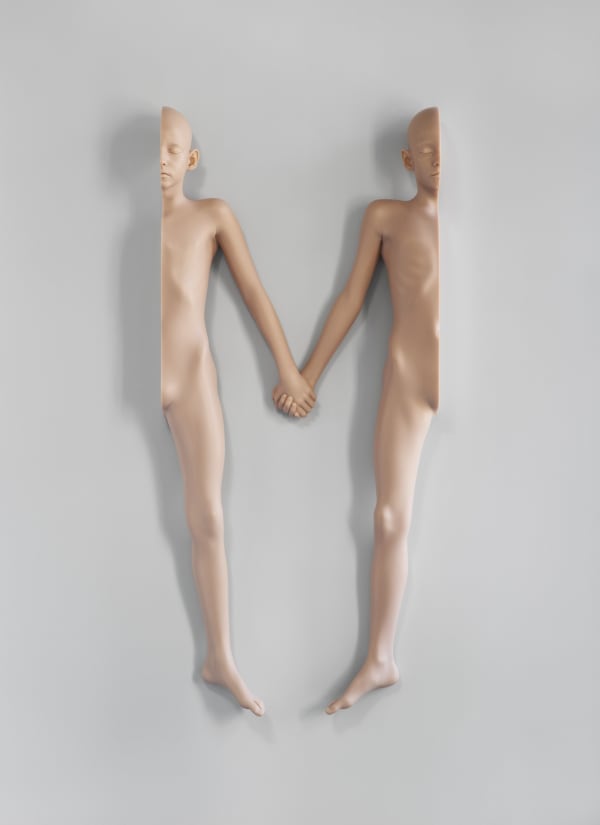Anders Krisár: Curated by Anton Svyatsky
Eyes closed, body suspended, a pale human form of a child, rendered with hyperrealism out of polyester and painted with acrylic to mimic the texture of impossibly spotless skin, split in two. Not by violence, but by the tender, careful hand of its creator. The two halves of one body, firmly interlocked at the hand and made whole.
Mobius is pleased to announce Anders Krisár, the first exhibition of the Swedish artist in Romania, curated by Anton Svyatsky. The exhibition is on display from October 12th through November 9th.
Eyes closed, body suspended, a pale human form of a child, rendered with hyperrealism out of polyester and painted with acrylic to mimic the texture of impossibly spotless skin, split in two. Not by violence, but by the tender, careful hand of its creator. The two halves of one body, firmly interlocked at the hand and made whole. They hold hands tightly, not necessarily out of fear, but certainly out of necessity. The title, "M (girl)" (2015), stands for the physical form insofar as it resembles a letter of the Latin alphabet - if it were "whole", perhaps it would be called "I". The work allows many different considerations, all of which result in impossible contradictions. Are you to regard the title of the work, which is a single, whole letter, or the body that is split into two parts? Are you to focus on the fragility of this split body, or the strength of the grasp, which binds the halves together? The mind jumps between threads, struggling to follow the one that leads to the answer.
Anders Krisár's work is not subject to interpretation by reason, because it comes from a place that by its very nature is not of the understanding, but of feeling. The perfectionist execution and flawless surface is not an end in itself. Rather, it is a way to make the formal or physical characteristics fade away, as if looking through a perfectly translucent, spotless window at the sublime complexity of our inner universe. We can look with the eyes, but can see only by empathy.
Arguably the two most important and lasting relationships in a person's life are with one's self, and with one's mother. They are distinct, but interdependent - one reaffirms the other. The mother is the first "other" we come into contact with upon entering the world. She is the very first proof of our existence, and very often we are the meaning of hers. Our first glimpse of empathy is a reflection in her eyes, and it's through her that we learn to see the world.
In navigating the subtleties of these relationships, Krisár challenges our understanding of the Self and our knowledge of the other. The sculptural work in the survey explores the nature of the Self, highlighting its fragility and reaffirming its strength, dissecting it into parts and inquiring into what makes it whole. The photographic work exists on the boundaries of the medium's inherent contradictions - the delicate balance between presence and absence, the juxtaposition of the ephemeral and the corporeal. These themes permeate (but don't exhaust) Krisár's oeuvre, and are the subject of this survey.

















